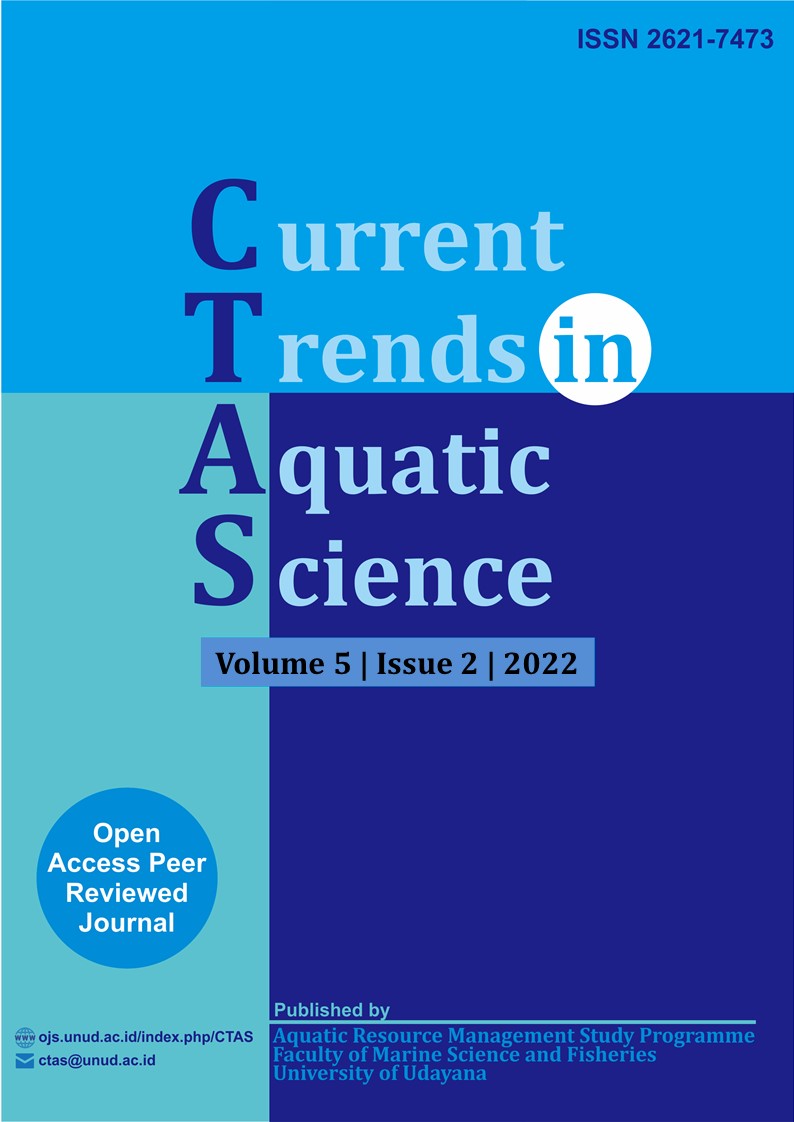Pendederan Ikan Nila (Oreochromis niloticus) Tahap II Menggunakan Pakan Fermentasi dengan Agen yang Berbeda
Abstract
Fermented feed application for fish nursery have been known could improve nutritional value, growth, and increase digestibility of cultured fish. The purpose of this study was to determine the effect of fermented feed with different fermentation agent on the performance of stage II tilapia nursery. The fermentation agent used in this study were fermipan containing 25 g/kg of yeast (Saccharomyces cerevisiae) and probio?7 containing 25 ml/kg of bacteria (Bacillus sp.). The study was performed by 3 treatments and 3 replications each treatment. The treatments were treatment A (control), treatment B (fermentation using S. cerevisiae 25 g/kg), and treatment C (fermentation Bacillus sp. 25 ml/kg). The observation for 2 months showed that the highest of specific growth rate of tilapia (Oreochromis niloticus) was found in treatment B with 5,12%/day, followed by treatment C (4,90%/day), and the lowest was treatment A (4,80%/day). The highest survival of tilapia (O. niloticus) was found in treatment B of 70%, followed by treatment C (63,33%), and the lowest was treatment A (60%). The results of the One-Way ANOVA statistical analysis with Duncan's post hoc test showed significantly different between treatments for the specific growth rate and survival of tilapia (P<0.05). The highest feed conversion ratio (FCR) was found in treatment A of 2,49, followed by treatment C (2,35), and the lowest was in treatment B (2,29). This FCR results were not significantly different between treatments (P>0.05). Water quality parameters measured include dissolved oxygen (DO), degree of acidity (pH), temperature, ammonia, nitrate, and nitrite were still within optimal range for Tilapia nursery culture.


